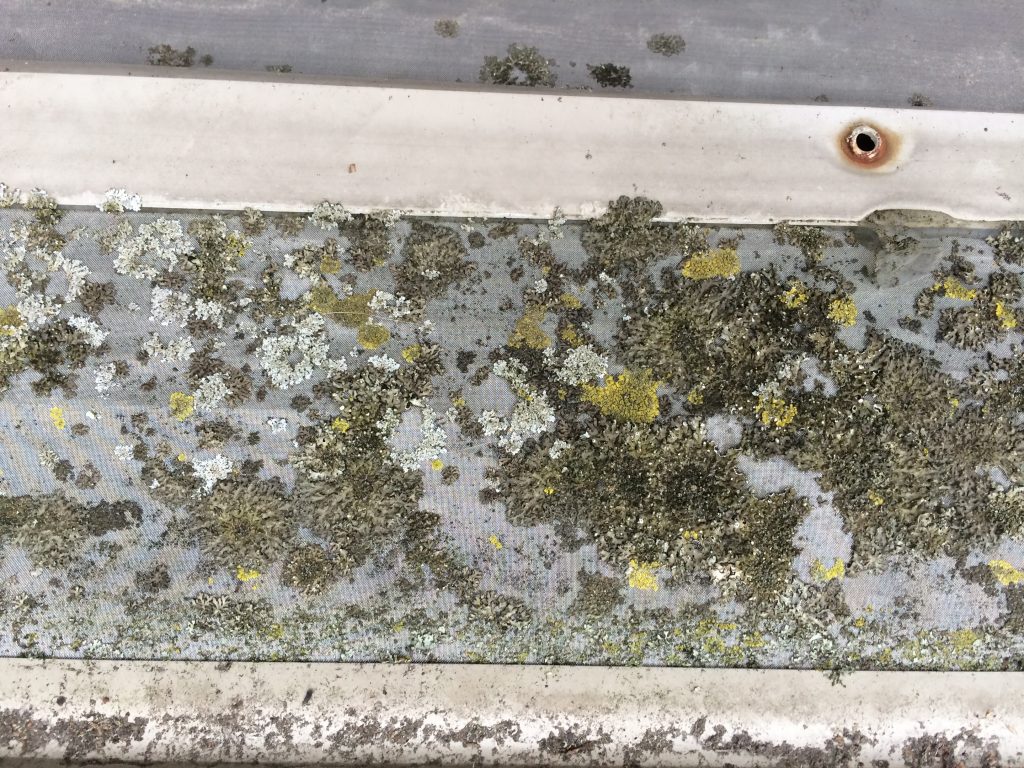When rain water moves across asphalt shingles, water dislodges tar that is part of the shingle’s foundation. Tar becomes fluid like oil in hi-flow areas (such as a valley or on any section of roof below a downspout) and moves across the shingles into the gutter. If you have a gutter guard installed, the tar attaches to the screen and when it dries, it becomes virtually impossible to remove from the screen. This can clog the openings in the screen, causing water to spill over the gutter guards top. LeafFilter offers two types of screen: a very fine and more porous screen. The fine screen is intended for all the straight runs and the porous screen is intended for inside corners where water flow is greater. If the fine screen is used in these high flow areas instead of more porous screens, odds are the tar will accumulate and seal the openings in the screen.
This issue is not unique to LeafFilter. It is also true with Gutter Glove and other gutter guards. 50 micron screens, such as those used on LeafFilter and Gutter Glove Pro are, in our opinion, are too fine for their intended purpose. These ultra-fine screens have also been shown to grow moss and other organic matter on northern exposures and shaded areas of the gutter.
Despite these issues, which are generally limited to a small area of any given home or can be eliminated altogether with proper care and planning, gutter guards have been proven to be the most effective gutter protection systems. While Consumer Reports got that right, the fact that they limited their choices to 2 gutter guards and awarded them both #1 ratings for different classifications — professional and DIY installation — there are better systems on the market.
Post time: May-10-2022

